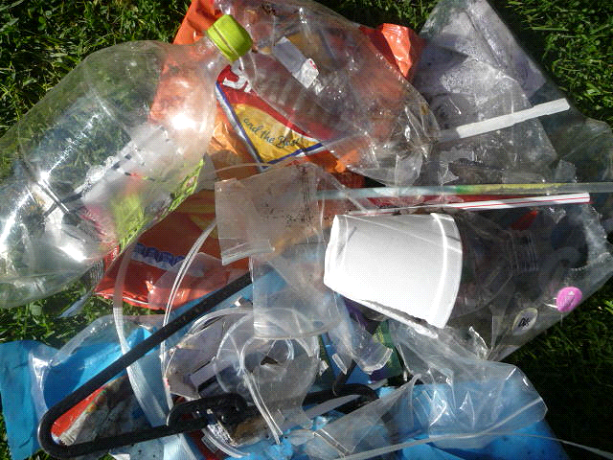Review finds packaging regulation fails to drive change
Posted on April 26, 2022 by DrRossH in Plastic Limiting Regulations, Plastic Waste NewsTime is ticking to resolve the serious flaws that exist in the regime for managing packaging waste, a review of the National Environment Protection Measure (NEPM) for Used Packaging Materials (UPM), released by the Federal Government, has found.
National Waste and Recycling Industry Council (NWRIC) CEO, Rose Read*, said a consistent theme throughout the findings was the lack of a united government approach to clear goals and obligations, as well as a lack of enforcement.
As a result, the UPM NEPM has failed to deliver on its environmental protection goal, “to reduce environmental degradation arising from the disposal of used packaging, and conserve virgin materials through the encouragement of waste avoidance and the re-use and recycling of used packaging materials by supporting and complementing the voluntary strategies in the Covenant and by assisting the assessment of the performance of the Covenant”.
“The review’s series of recommendations to address these failures must be tackled urgently if Australia is to meet any of its 2025 packaging targets, let alone the 2030 National Waste Policy Action Plan Targets,” Read said.
“It is clear that a new, national scheme, underpinned by federal regulation is urgently needed and that this regulation must clearly set out objectives, responsibilities, financing, and targets as well as penalties for non-compliance by packaging companies and brands.”
Read said this national scheme should take a co-regulatory approach where the government sets the rules and ensures compliance, and the organisations that make and use packaging invest in activities that design out waste, increase reuse and recovery of used packaging materials, and contribute to government regulation costs.
“These companies can no longer keep passing the environmental costs of their poorly designed, waste-generating packaging on to local councils, state governments, the waste and recycling sector and the broader community,” Read said.
While the Australian Packaging Covenant Organisation (APCO) may have increased the number of brands signed up to the Covenant in recent years, the independent review of the NEPM and the Covenant found there had been minimal design improvements and only small increases in recycling rates and recycled content.
Similarly, the review found that brand performance against the packaging sustainability framework had been small.
This was further reinforced by the findings from APCO’s recent Collective Impact Report, which found that on current projections, Australia will fall short by 50 per cent of its target to recycle 70 per cent of plastic packaging by 2025.
As stated recently by APCO CEO Brooke Donnelly, the core message of this report is clear – if we are going to achieve the 2025 National Packaging Targets, we all need to do more and the time to act is now.
“Simply signing up to the Australian Packaging Covenant and committing to the Sustainability Packaging Guidelines has enabled brands and packaging manufacturers to avoid their product stewardship responsibilities across the whole lifecycle of their packaging and pass the buck to local councils and state governments under the veil of shared responsibility,” Read said.
“The independent review findings provide the next federal government with a real opportunity to reduce Australia’s waste generation, create new businesses and jobs, reduce carbon emissions, and conserve our virgin materials while also cleaning up our precious waterways and habitats and protecting our wildlife.”
The waste and recycling sector wants to see the incoming federal government put in place regulation and procurement regimes that reward good packaging design, innovative reuse, and market development for recovered used packaging and penalise those who continue to rely on non-renewable virgin resources and poorly designed packaging that cannot be easily reused, recycled, or composted.
“Just look at the effectiveness of state-based container deposit legislation in changing packaging and beverage companies’ behaviour. All it took was some good legislation and a committed government,” said Read.
“Now, we see major beverage companies redesigning their containers, so they are more recyclable, increasing recycled content, investing collaboratively with the waste and recycling sector to build innovative collection and recycling processes, reducing council costs and litter as well as creating jobs and providing meaningful social benefits to those in need.
“Let’s hope that the next federal government has the will to step up and move quickly to put in place smart regulation and procurement regimes that ensure all packaging companies and brands step up to meet the 2025 packaging targets.
“The independent review findings cannot be ignored. The UPM NEPM is a failure. It’s time to throw it out and start afresh.”

 How many people today grab a takeaway coffee cup from the local cafe to drink on the go? We don’t know, but the number must be enormous.. Most every one of the above have a plastic top that will last 100s of years. Some cafes still use plastic cups that last a similar time. Is 10 minutes of coffee worth 100s of years of trash?
These items can be seen littering our gutters and on our streets all over the place. If they were all cardboard, they would still be littered, but they would, at least, be gone in a short time.
They do not need to be made of plastic.
How many people today grab a takeaway coffee cup from the local cafe to drink on the go? We don’t know, but the number must be enormous.. Most every one of the above have a plastic top that will last 100s of years. Some cafes still use plastic cups that last a similar time. Is 10 minutes of coffee worth 100s of years of trash?
These items can be seen littering our gutters and on our streets all over the place. If they were all cardboard, they would still be littered, but they would, at least, be gone in a short time.
They do not need to be made of plastic.
 On the way home from the gym last week, a distance of about 1 km (1/2 mile), I counted the items of plastic litter on the curb as I walked. In that short distance I counted 63 pieces of plastic litter. Plastic drink bottles, bottle tops, candy wrappers, plastic film, polystyrene fragments etc. That seemed to be a lot to me. I guess it is a generational thing. Our parents would have been horrified to see that amount, whereas it seems to go unnoticed by our youth of today. In another 20 years how many pieces will there be on this stretch, -- 200? What will today’s youth think of that new amount then when they are older? Will their children be so readily accepting of a higher amount of litter?
On the way home from the gym last week, a distance of about 1 km (1/2 mile), I counted the items of plastic litter on the curb as I walked. In that short distance I counted 63 pieces of plastic litter. Plastic drink bottles, bottle tops, candy wrappers, plastic film, polystyrene fragments etc. That seemed to be a lot to me. I guess it is a generational thing. Our parents would have been horrified to see that amount, whereas it seems to go unnoticed by our youth of today. In another 20 years how many pieces will there be on this stretch, -- 200? What will today’s youth think of that new amount then when they are older? Will their children be so readily accepting of a higher amount of litter?
Discussion · No Comments
There are no responses to "Review finds packaging regulation fails to drive change". Comments are closed for this post.Oops! Sorry, comments are closed at this time. Please try again later.